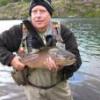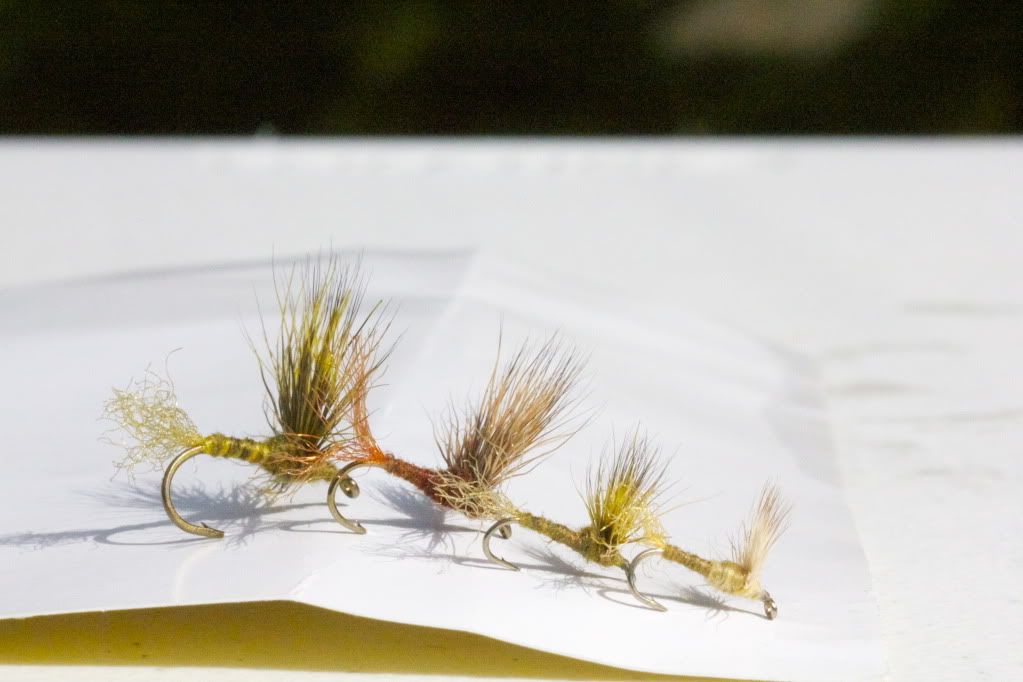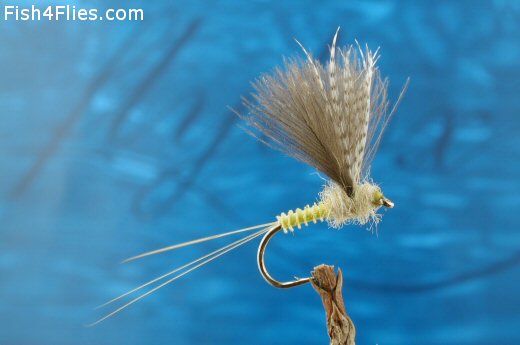-
Content Count
574 -
Joined
-
Last visited
Posts posted by flyfishing99
-
-
you mean to tell me a $3000 vise has pockets machined into the jaws as a crutch to compensate for inadequate hook holding power???


 By the way, it is against the LAW to use slips of paper with this vise to protect hook finish... you are required to use cut up and folded pieces of a $100 bill.
By the way, it is against the LAW to use slips of paper with this vise to protect hook finish... you are required to use cut up and folded pieces of a $100 bill.I really enjoyed my LAW vise. One of the best vises ever made. I now use a jvice with the damasteel jaws. Never used paper on either vise.
Merry Christmas!!!
-
Merry Christmas
Mele Kalikimaka from Hawaii
This is the shirt I received for Christmas

-
No doubt owning/operating a retail shop of any kind is difficultIt sure is and tying commercial is a pain too..
If you enjoy your hobby stick to it, if you are looking to make some money then you had better be willing to get all the tax stuff and business licenses so you can buy wholesale. Trust me I have a shop. Its tough especially during season. just remember that when the shop calls during a good season and wants flies and you want to go fishing. feel free to call me if you want to on details of tying commercially..
I used to tie a limited number of patterns for a fly shop. I didn't mind doing it, but I can tell you that you really don't make much from it. You could make a lot more taking a part-time job somewhere.
The only real advantage is that I was allowed to buy stuff at the shop at wholesale. So, I never really had any money from it as I spent my earnings at the shop............................
Best of luck to you though!!!!!!!!!
-
There's no earthly way that it's worth that much money.
Matter of perspective...damascene steel is neither cheap to produce, or easy to work...so although no tying vise may really be 'worth' $3000, I am sure that there is close to that in time/work/material investment in this vise.
You should look at the Jvice and see if he has more damasteel jaws available. Probably less than 1,000 with tying table and all.
-
Thank you for clarifying that. There is not a lot of info about it on the net.Jeff,
Here it is in a nutshell: Lawrence decided not to accept any new orders, and is presently clearing order backlog. Once the backlog is cleared he will decide whether to take on any fresh orders, and build more vises.
Regards,
Hans W
You never know...........I sold my LAW vise here about 4 months ago................
-
I forgot to ask.
I noticed that the link said something about triming the hackle from the bottom. I am assuming this is a dry fly pattern. Would trimming the hackle of the bottom make it ride lower and more likely upright in the water or would trimming the hackle make it sink like a wet fly? I was curious because I dont know wether trimming a dry flies hackle effects its ability to still float and how it changes the hackles performance in water.
Trimming makes it ride lower, but it is still a dry fly. That also helps stabilize the fly. You don't have to trim the hackle though.
-
Those are really nice, I do like the wings on the second one better. Do you have a material list or tying instructions, I am still just getting back into this. I would like to give that a try :-)
Jason Borger shows his method ( which I tried to emulate)
Thanks,
Byron
-
My next version following comment above

-
Nice fly Byron. I'm no expert on loopwings, but that looks pretty good to me. I like that you stacked wing loops rather than having one loop. One suggestion would be to tie in the loop feather a bit further up just at the junction of the thorax and abdomen. That way the wing will be the width of the thorax and be a bit better scaled to the natural wing.
Mike.
Thanks Frequent. I will adjust the tie-in point and try again.
Byron
-
Hi,
I've been tying for a long, long time. One fly pattern that I like and does not seem to get much attention is the Loop Wing Dun. There is very little on this fly pattern on youtube, etc. I'm not sure if I'm doing a good job on this pattern or not. If not, I would like to know what it is that I may not be doing correctly.
Thanks for looking and appreciate your comments.
Byron

-
First, I should say I'm not a photographer, so sorry for the pic quality.
but that said - the second pic is a pile of flies my daughter (10 years old) tied. Not her first flies, but fairly early on. More importantly, we are re-doing our kitchen - so we embedded them in resin and made them into kitchen cabinet knobs which we will use for our new cabinets (1st pic).
While the quality may not be like most of what I see here ... these are the best damn looking flies I've ever seen in a long time!!
Great idea there!!!!!!!!!!!!
-
Thanks,
It is "normal" zelon.
-
are they judging the fly or the barb of the hook?
in my opinion it shouldnt make a difference
I won a tying contest of AK Best and I had not crimped the barb.
-
It was made by thompson. Not sure what the name was but the auction price now was not
Far off from the original price. Not sure if you can still get different jaw sets for it.
I think it was made in the mid-90's, as I recall.
-
I'm not a hunter... I was as a kid but Vietnam pretty much cured me of that (I wasn't a combat soldier, just a pencil pusher all those years ago, I don't disagree with hunting, just lost the desire when I came home in 1971 and gave the few hunting weapons I had to my father - in all the years since I haven't felt the loss...). I believe that in my part of the world most waterfowlers have gone to steel shot (and thought it was country wide and required, now for some years... someone please enlighten me). Like most anglers I try to be conservation aware and support reasonable efforts to protect wildlife in all its forms.
Unfortunately, reasonable isn't on the table with a tiny minority of folks and they seem perfectly willing to advance their arguments in any fashion they see fit. Over and over again emotion based appeals with a small amount of real science have been taking the place of any well studied, honest scientific approach and you can see the results of that sort of stuff nationwide. Any idiot that would actually take a shot at an eagle deserves serious legal penalties (and I'm pretty sure they're on the books already under federal law...). Because of the way that side of the political spectrum has gone about their advocacy, more and more hunters, fishers, and other wildlife types have turned away from them. I'm one of them. Unfortunately lots and lots of folks take their assertions as gospel and as a result we have these endless public policy disputes - and we see the results at election time. I do know that the wrangling over lead in saltwater ended up in court for some years before the attempt to ban it was defeated since I'm considered a manufacturer myself (even though I'm just a fly tyer and lure maker in a small way...) and pay federal excise taxes as a result on every fly I sell.... Here in Florida we watched as a similar outfit, the Save the Manatee Club, actually got a court settlement that required state government to do all kinds of things for a "threatened specie" then it turned out later that many of their claims were wildly exaggerated, some actually false, and that the manatee population was actually much, much higher than anyone one thought (after proper studies were done...). But we still live with quite a few restrictions as a result.
This sort of stuff has been playing out in political forums, elections, and public policy decisions now for some years. Most outdoorsmen that I know don't have anything positive to say about the folks on the far side of the environmental spectrum... More and more their assertions will be questioned and their credibility fading. Wish it weren't so.
After a bit of thought I realize I've certainly helped de-rail this thread... Apologies to all, moderator feel free to delete or move this wherever appropriate. As you can tell from reading this, like many I feel strongly about these kind of issues.
Hi there! Why is it that most waterfowlers have gone to steel shot?
The thing I never understood about such discussions is this: If there is even the slightest possibility that the move to lead-free weight substitutes is better for the wildlife, why not adopt it? Why continue using lead and then find out a decade from now that it is proven more dangerous to wildlife than you thought and it's too late then? Catch and Release was poo pooed a decade or so ago and now, I think you'll find most fly fishers agree that it is important in maintaining good healthy populations of trout............... Just my personal opinions, I know, but I want the fisheries and other wildlife to be better for my grandkids than it was for me.
By the way, I was in the infantry and then the MP's in the late 60's and never really hunted again after I got out (Spec 4!)
Somewhat interesting article here from NY State:
-
Found this post on another forum:
I use to think Split Shot and lead was no big deal! The amount of lead in a split shot or some lead wire on a hook. BUT AFTER SEEING A REGIONAL TV SHOW NORTLAND ADVENTURE LAST WEEK I HAVE A NEW OUTLOOK ON LEAD! THEY DID A FEATURE ON A WILDLIFE REHAB CENTER. THREE EAGLE WERE THERE FOR LEAD POISONING THIS FALL,ONE DIED! THEY STATED THAT STATED THAT LEAD AS SMALL AS A #6 BUCKSHOT CAN POISON AN EAGLE , A LOONS OR OTHER BIRDS OF PRY. iT'S A BIG JOB TO REPLACE
MY FLIES AND SMALL JIGS. no more lead for me!!!
Fishin' Jimmy
-
Hi,
Not my best ties. Got up this morning and decided to tie 4 flies for June-July on the Henry's Fork River in Sparkle Duns. These flies work well there. I think the Sparkle Dun is a great style of fly and can represent most hatches on the Fork when tied in different sizes and colors.
Supposed to be: Green Drake, Brown Drake, Flav, and PMD...............
Thanks for looking. Appreciate your take on the concept.
Byron

-
Hi,
I have been exploring Jason Borger's blog (son of Gary Borger). Jason is a very accomplished artist as well as caster/fisher/tier. Anyway, I like his method of tying a loop wing. Tried to emulate it, but probably not up to par with his version.

I went back and looked at Jason's. It is more like the one below. Somewhat sparse. It is not a particularly "good looking" fly at all. Just one that looks like it would be taken by Mr. Trout (to me at least).

-
Byron...
I tie mine by first laying the duck (measured to length) forward over the hook eye and securing with light wraps. Then I place a prepared wing of cdc on top of the duck and securing with tight wraps. When the wing is brought upright while dubbing the thorax, the duck remains in front of the cdc. Not that it's right or wrong; it's just the way I first saw the pattern in The Flies of Umpqua Feather Merchants in the early 90s.
Two commercial patterns:
From Solitude:
http://www.solitudefly.com/resizeImage.aspx?file=images/products/SC055PM.gif&max=520
This has a sparse cdc wing, and the duck appears more incorporated into the cdc than mine.
From fish4flies:

This wing is closer to what I tie, but the body isn't.
A search of Shane Stalcup's patterns might turn up better examples than these.
-Eric
Thanks Eric.
Was just ready to post this photo when I saw your response.


-
As said earlier, similar to the early days of the catch and release movement
-
Thing is, lead is bad for the fisheries. In many rivers, it is banned. There are fine lead-free substitutes available.From an internet report: "lead tackle also poses a potential toxicological threat. Lead (Pb) is a nonessential heavy metal with no known functional or beneficial role in biological systems. Although lead is relatively stable, under some environmental conditions (e.g., soft acidic water, acidic soil), lead objects can weather and the element can mobilize, spreading the toxic properties. However, the TWS/AFS technical review concludes that the greatest hazard arises from direct ingestion of lead ammunition and fishing tackle by wildlife, particularly birds"OK, this may be a bad start to this forum on my part, but here we go. . .
I appreciate the concern for the environment and the critters we share it with. I really do. But in this case, let us consider what the quoted article states, namely that "the TWS/AFS technical review concludes that the greatest hazard arises from direct ingestion of lead ammunition and fishing tackle by wildlife, particularly birds." To which I respond, uhm if a bird or other animal ingests a fly deposited in the waterside trees and bushes, he's going to have a bigger problem than eventual lead poisoning. A hook in the gut will do him in before the lead will.
Thanks to all for the tips on using lead and lead substitutes. I'm glad to see there is a consensus on how to do it

That was just one quote I found. A number of states are considering, or have passed, laws banning lead from fishing tackle. This reminds me of "catch and release" about 15 years ago. It was not well accepted by all at the time. I think most fly fishermen have adopted catch and release now - except, perhaps, in stocked streams with adequate hatchery production. Personally, I don't use lead anymore and don't keep fish.
I don't think any of us want a bunch of lead on the bottom of our streams (I think most lead gets lost on logs/rocks underwater in the stream).
-
Hi,
When I used to fish the Frying Pan, the best pattern was a CDC comparadun. However, it had either wood duck fibers or mallard flank fibers in front of the CDC. Gave a better definition to the wing.
Anyway, I use to tie these myself, but I am having trouble doing it again. I do not recall if you use cdc feather tips with wood duck feather tips in front of it.
\
Could someone tie one for me, show a photo, and describe the method of marrying the wing fibers?
Thanks,
Byron
-
That is great! I Love all the drawers!
That sure is a great storage system.
Any idea of cost and where it was purchased?
-
We're talking lead substitutes, aren't we?
you might be but i'm not!
i dont think this thread is about substitutes
my reply would have been the same for that too!
Thing is, lead is bad for the fisheries. In many rivers, it is banned. There are fine lead-free substitutes available.
From an internet report:
"lead tackle also poses a potential toxicological threat. Lead (Pb) is a nonessential heavy metal with no known functional or beneficial role in biological systems. Although lead is relatively stable, under some environmental conditions (e.g., soft acidic water, acidic soil), lead objects can weather and the element can mobilize, spreading the toxic properties. However, the TWS/AFS technical review concludes that the greatest hazard arises from direct ingestion of lead ammunition and fishing tackle by wildlife, particularly birds"













wtb LAW VICE
in The Fly Tying Bench
Posted · Report reply
I really enjoyed my LAW vise. One of the best vises ever made. I now use a jvice with the damasteel jaws. Never used paper on either vise. I believe someone said the Ekitch or Ekich vise is the one that costs 3,000. Not sure about that personally. I think I paid about 700 for my LAW about 10-15 years ago and sold it not long ago for 900. I hear they get more than that though. It was a thing of beauty. I wish every tier could afford to own one or a jvice. There is something special about tying on something made so well and so personally.
Merry Christmas!!!